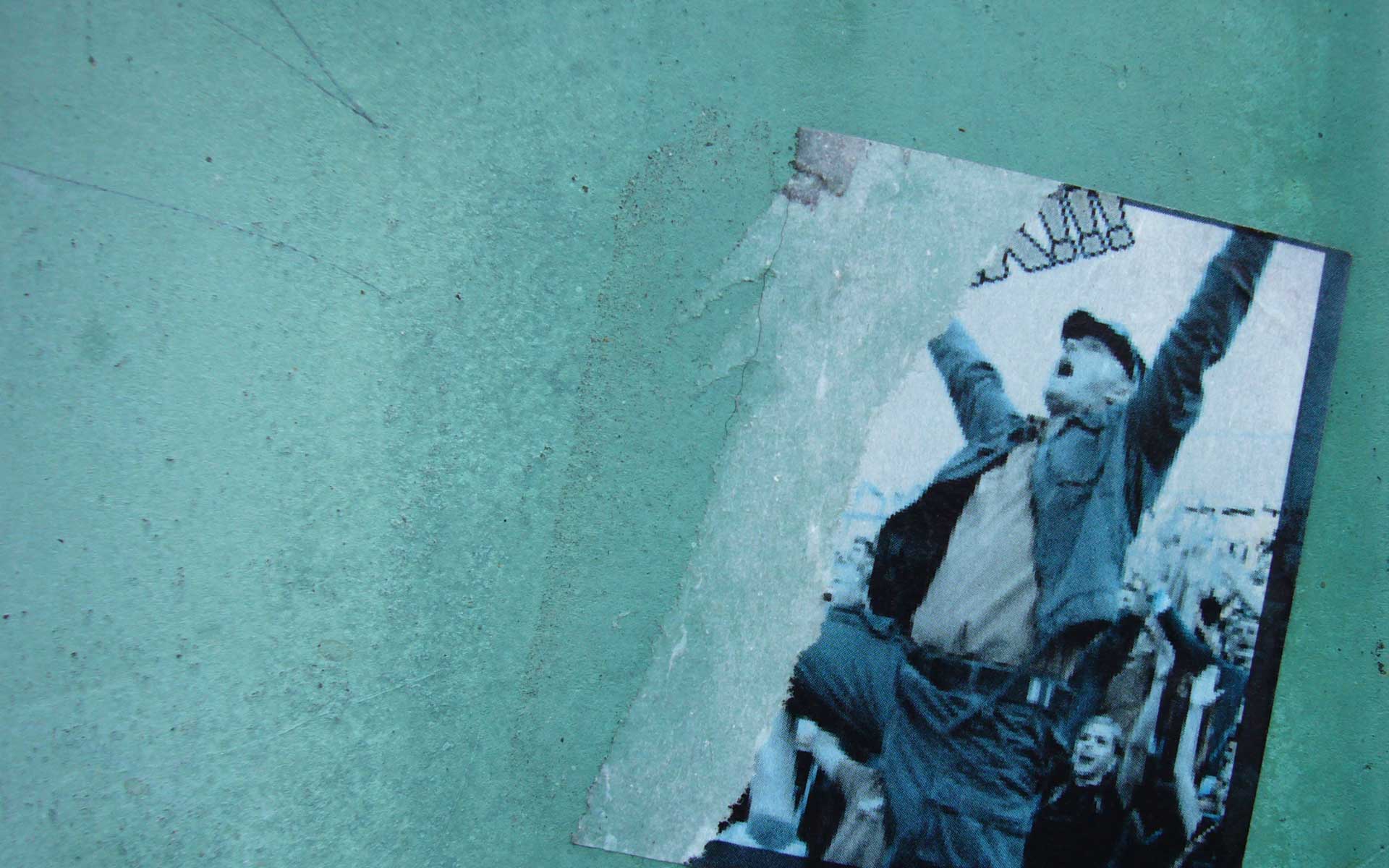Over the years, our practice has developed and been shaped by both our creative interests and regional context. Since our projects hybridise genres and forms, we don’t have a ready-made approach to making work. We like to treat each piece in its own right, taking into account what audience will see it and where it will be presented. However, there are a number of conceptual threads that weave through our practice.
Place: When we first formed Accidental Collective, there were not many theatres in the area that programmed contemporary performance. So, responding to this local cultural landscape, we found ourselves creating projects for outdoor spaces and unusual locations. We then quickly developed a taste for making work that punctures or interrupts the everyday. To date, we have performed in shop windows, beaches, town centres, cafés and bars, city squares, historic sites, government buildings, galleries, as well as over the telephone and through Skype. What attracts us about these settings is the fact that different audiences may encounter the work, sometimes deliberately and sometimes by accident. Moreover, working outside theatres has enabled us to explore a larger number of ways to engage with the public.
Audience: For us, one of the most special things about performance is how it brings people together. We are therefore particularly drawn to the notion of encounter and, taking it a step further, exchange. You. Us. Together. Here and now. We we like to establish a format in which audience members have a degree of agency over their own experience, and are encouraged to make a personal investment in the work. To do so, we often subvert recognisable frameworks (i.e. playing hide and seek, health spas, speed dating, shop windows, sharing a cup of tea). This has enabled us to facilitate a particular kind of exchange between performers and audience; one that is innovative and experimental yet not intimidating or threatening. Our projects have made the audience into voyeurs, accomplices, clients, protagonists, and co-creators in order that they may acknowledge the shared responsibility in creative action.
Bricolage: We prefer to articulate our devising process as ‘bricolage’. This word of French origin alludes to the process of creating or constructing work from a diverse range of things that happen to be available (regardless of their original purpose). We like to take this approach because it is particularly playful and lends itself to an organic and flexible way of creating. Our practice brings together and juxtaposes different materials, quotes and references different sources, and borrows from all human endeavours (whether culture, science, or history). This process of assemblage means that our work is multilayered and conceptually rich. It offers the audience a variety of ‘entry points’ which make it accessible and engaging for people of different backgrounds and sensibilities.
Lo-fi aesthetics: When we begin a new project we often start with an image or a sense of composition. Colour and texture have been very important in our work, and are embedded in the dramaturgy of each piece. Whether creating work indoors or outdoors, we like our pieces to be visually striking. However, spectacle is not our thing. We believe that the smallest of things has the potential to be truly arresting. This means that we lean towards subtle rather than grand gestures. Our aesthetic approach therefore tends to elevate the mundane to the artistic, revealing the magical within the everyday, and finding poetry in the overlooked, the broken, or the discarded. We are resolutely lo-fi rather than high-fi; not shiny and new but lovingly hand-made. There is always beauty if you look for it.
